19 of the Best Cool-Weather Crops for a Productive Fall Garden
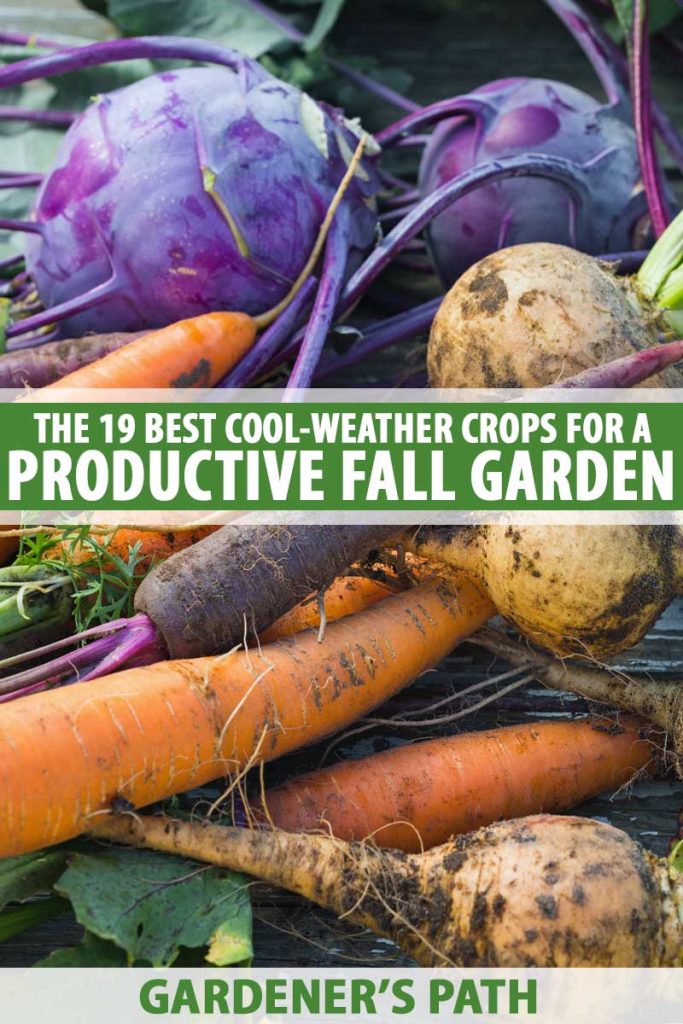
Autumn is my favorite time of year! As the air becomes crisp and fresh, I find myself reenergized and geared up for a second round of gardening.
For me, growing crops in the fall has become a fantastic way to continue to bask in the garden magic for much longer each year.
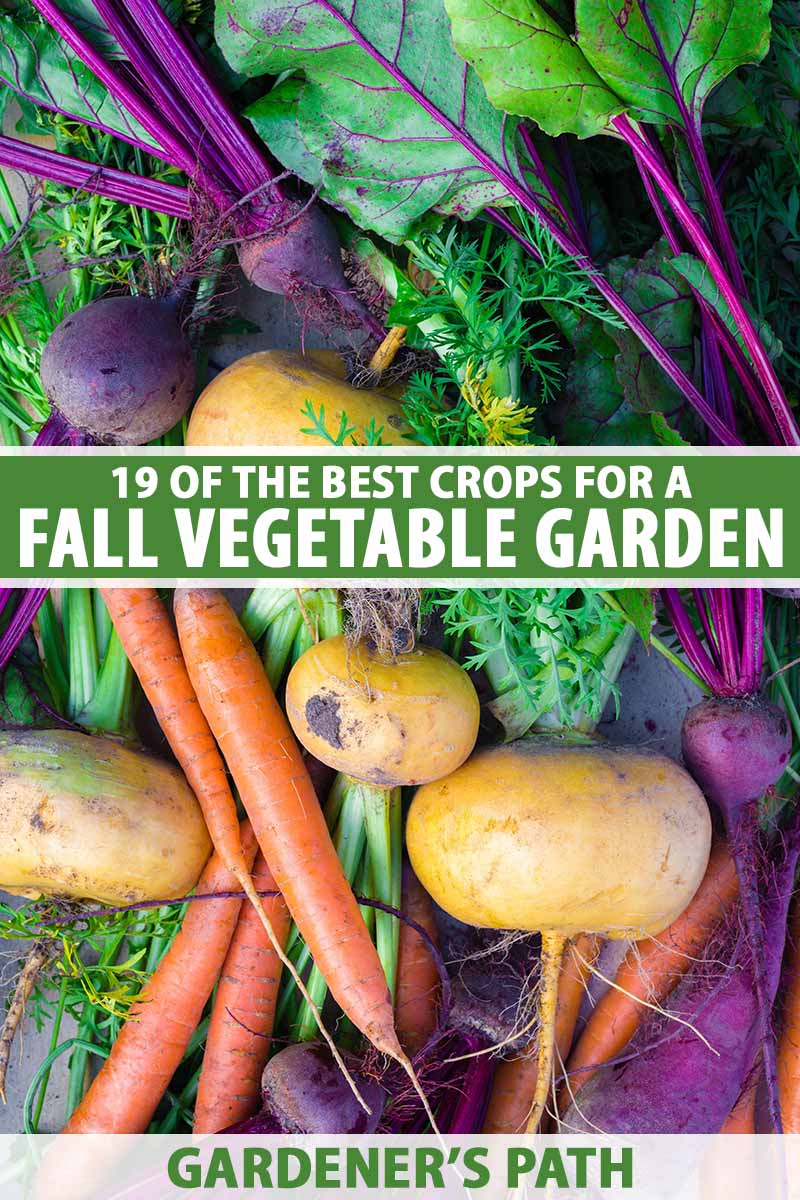

We link to vendors to help you find relevant products. If you buy from one of our links, we may earn a commission.
There are many delightful crops that grow well in a fall garden.
In fact, many species and varieties, such as various cole crops, become even more tender and flavorful when planted for an autumn harvest.
Read on to learn about some of my favorites!
19 Crops for a Productive Fall Garden
1. Arugula
Who doesn’t love the spicy, sharp kick of a fresh arugula salad?
Arugula (Eruca vesicaria ssp. sativa) does very well in cool temperatures and is a quick and easy addition to any fall garden.
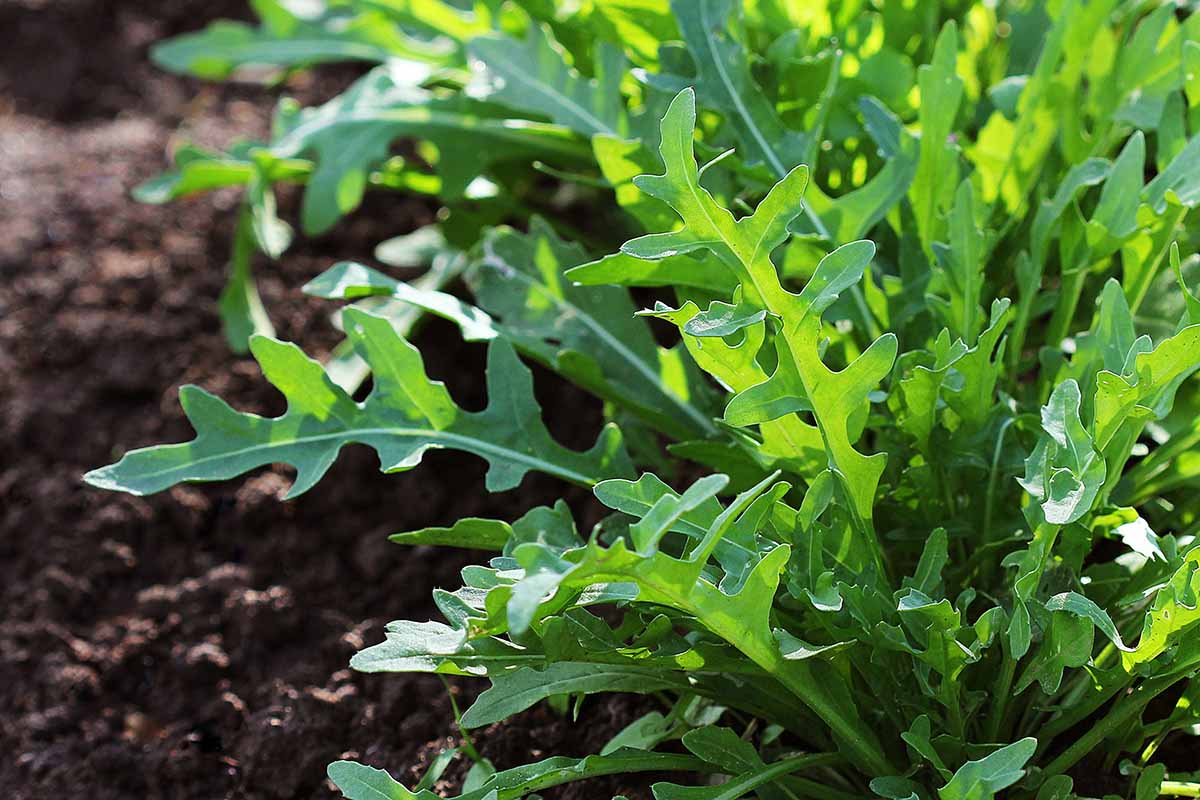

One of the best parts of my autumn morning routine is taking a quick stroll through the garden to pick some fresh arugula leaves for my breakfast sandwich, stopping for just a moment to appreciate the vibrant fall colors all around me.
To maintain a continuous harvest of arugula throughout the fall, broadcast seeds in late summer and repeat sow every couple of weeks. Harvest until plants begin to flower or die back.
Eden Brothers has seeds for a number of tasty varieties to choose from. And you can check out our roundup to learn more about the different types.
Learn more about growing arugula in our guide.
2. Beets
Red, juicy, and delicious, there is nothing quite like a beet to give a meal a little flair.
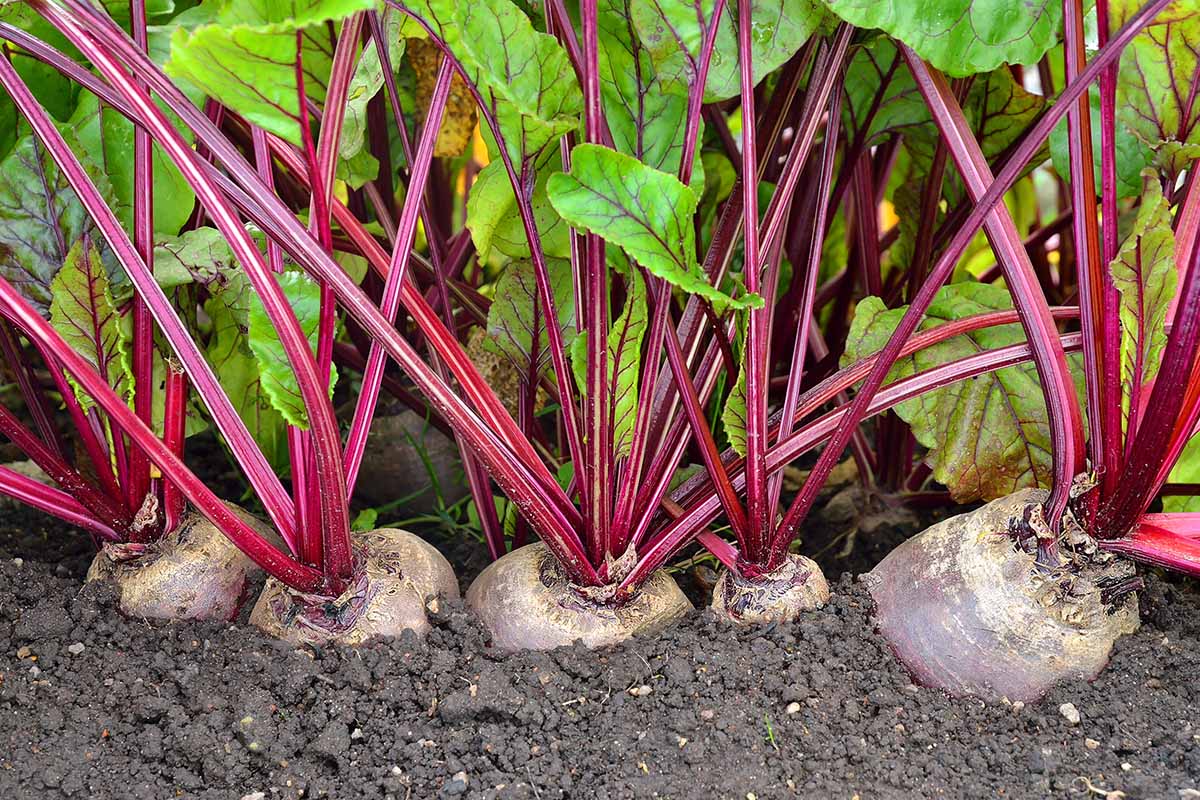

Beets (Beta vulgaris) are a great choice for a fall garden, tending to have even more vibrant colors in autumn than when planted in spring and a delightfully sweeter flavor as well.
Beets can be planted directly in the garden eight to 10 weeks before your first expected frost for a fall harvest. Plants are frost-tolerant and can remain in the garden even after a fall freeze.
They can often survive temperatures into the mid-20s Fahrenheit.
No need to wait long to begin seeing the fruits of your labor. You can harvest young leaves within three weeks of sowing, and roots in as few as five.
A wide variety of seeds are available from Eden Brothers, and have a read of our roundup to learn about 17 favorite cultivars.
Read more about growing beets in our detailed guide.
3. Bok Choy
Also known as pak choi, this delectable Chinese cabbage is crisp, smooth, and tender, with a slightly peppery flavor. It is a classic in stir fries and makes a wonderful addition to fall soups and stews.
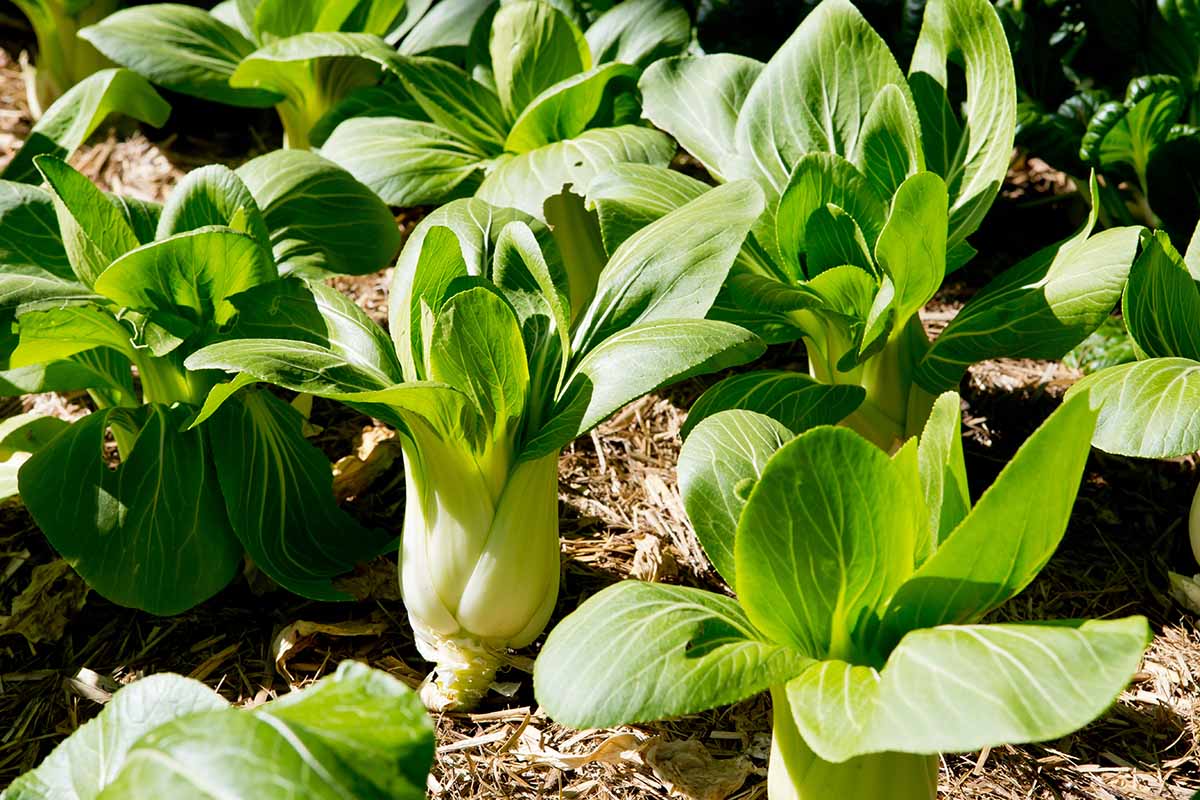

Bok choy (Brassica rapa var. chinensis) is a biennial that can live through the winter in Zones 8 and above, though it will be quick to bolt once spring arrives.
Direct sow in full sun or partial shade beginning in mid- to late summer and up until six to eight weeks before the first expected frost.
Seeds are available from True Leaf Market.
Learn how to grow bok choy here.
4. Broccoli
Broccoli, a favorite in my household, is all the more delightful when grown as a fall crop.
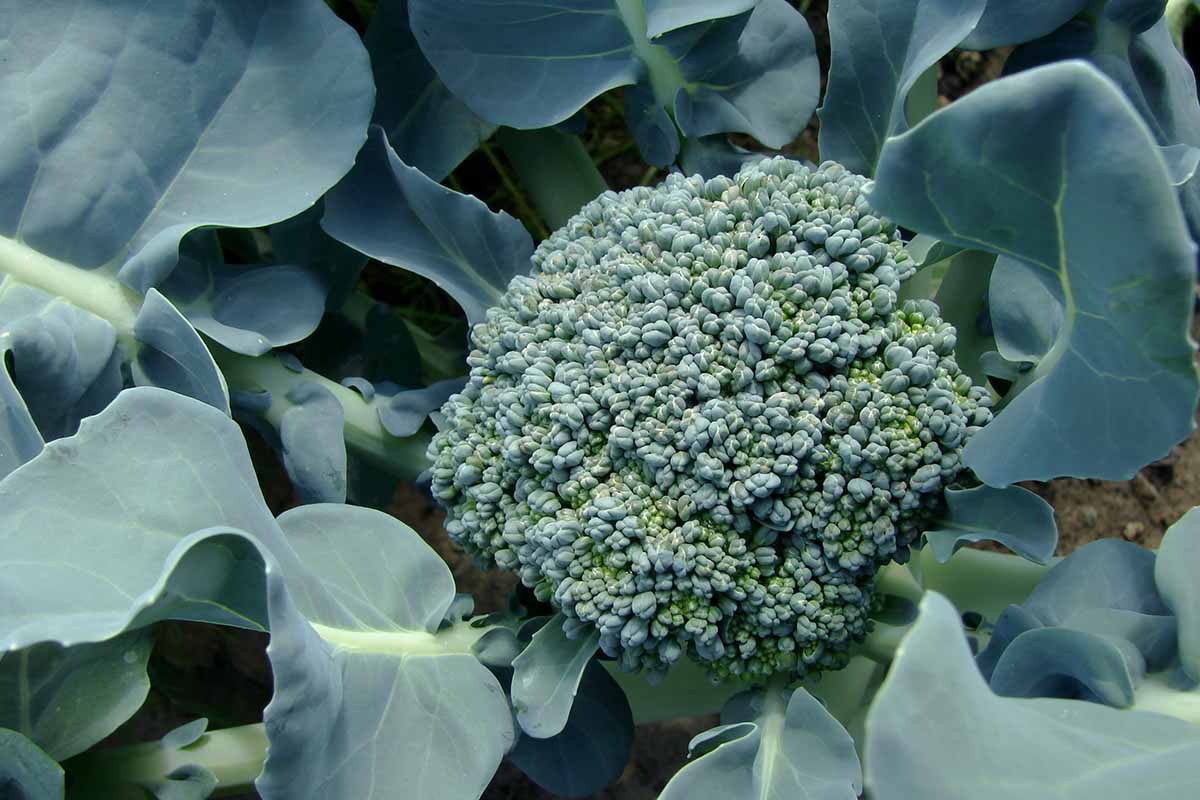

Broccoli thrives in cooler weather and will tolerate hard frosts. Without the stress of summer heat, the plant pours energy into producing larger heads without bolting.
Fall broccoli is also quite delicious. Heads are extra sweet and tender, and a few light frosts enhance the flavor.
Start seedlings indoors in flats and transplant 10 weeks before the first expected frost date. You might consider using a floating row cover in late summer to protect the seedlings from pests until the weather cools.
You can find seeds for a variety of different cultivars available from True Leaf Market.
Read more about growing broccoli here, and check out our guide to see more of our recommended selections.
5. Brussels Sprouts
Brussels sprouts (Brassica oleracea var. gemmifera), like their close cousins cauliflower and broccoli, also have a reputation for being a bit picky in their growing conditions.
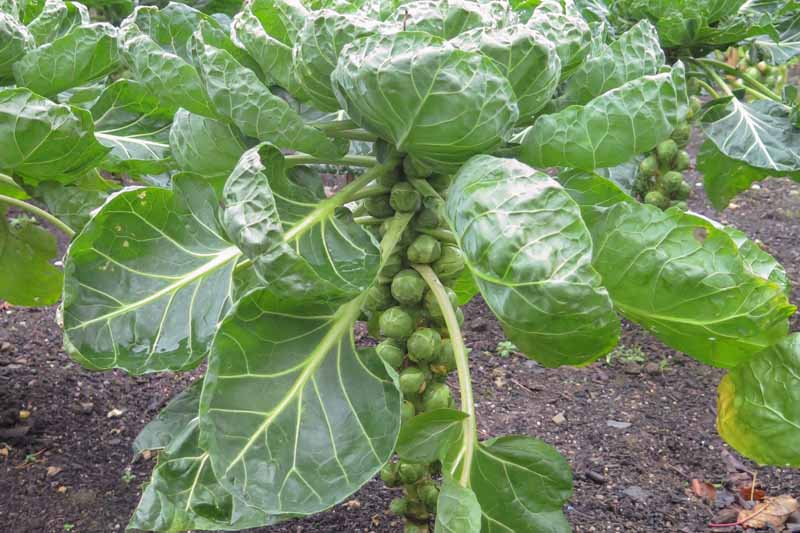

There is truth in this belief, but they aren’t impossible to grow in a home veggie plot.
They just require the right temperatures for the best results. Brussels sprouts perform best at temperatures between 45 and 75°F. They will also tolerate a few days below freezing and are lovers of a good frost, which enhances their flavor.
In northern parts of the US, gardeners can plant a standard variety (with about 105 days to maturity) in mid- to late June and have crop ready to go by Thanksgiving in November.
Canadians wanting to hit their Thanksgiving in October can look at 85-day fast-growing varieties. These are also excellent choices for those in the southern US that need to wait until late August or early September before planting.
You may to need explore different varieties, such as these from Burpee, to find the best cultivar that fits in with your specific climate or long-range weather outlook each year for the best harvest.
Learn more about growing brussels sprouts in our guide.
6. Bunching Onions (Allium fistulosum)
I love growing bunching onions in my fall garden because they require very little effort and don’t take up much space.
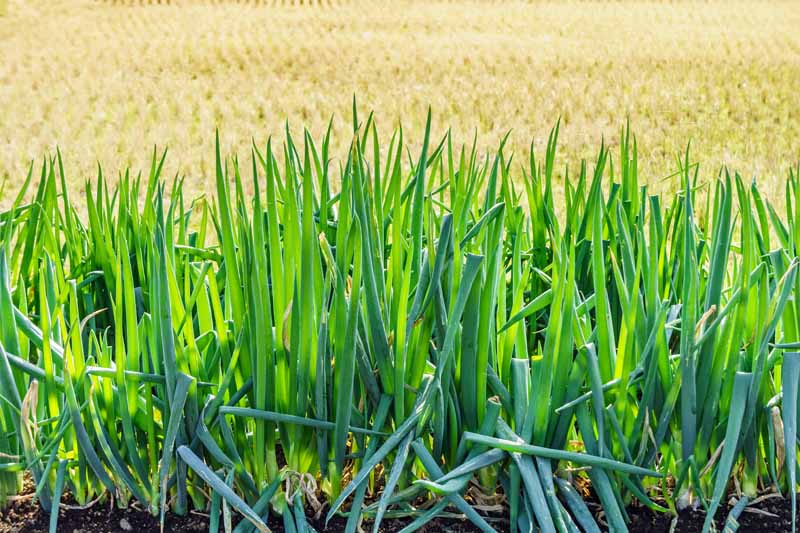

Even better, bunching onions are perennials. If protected appropriately from winter weather they can continue growing and spreading year after year. Once established, they can be easily be divided to make more plants.
Direct sow eight to 10 weeks before the first expected frost for a fall harvest. Plants will go dormant over the winter and begin to multiply in spring, forming perennial evergreen clumps.
Eden Brothers sells seeds for a hardy variety that overwinters well, and you can learn more about growing bunching onions in our guide.
7. Cabbage
This list wouldn’t be complete without a shout-out for cabbage!
Cabbages, like many of the Brassicas mentioned in this guide, are cold-tolerant crops that reach their peak flavor in the fall after exposure to light frosts.
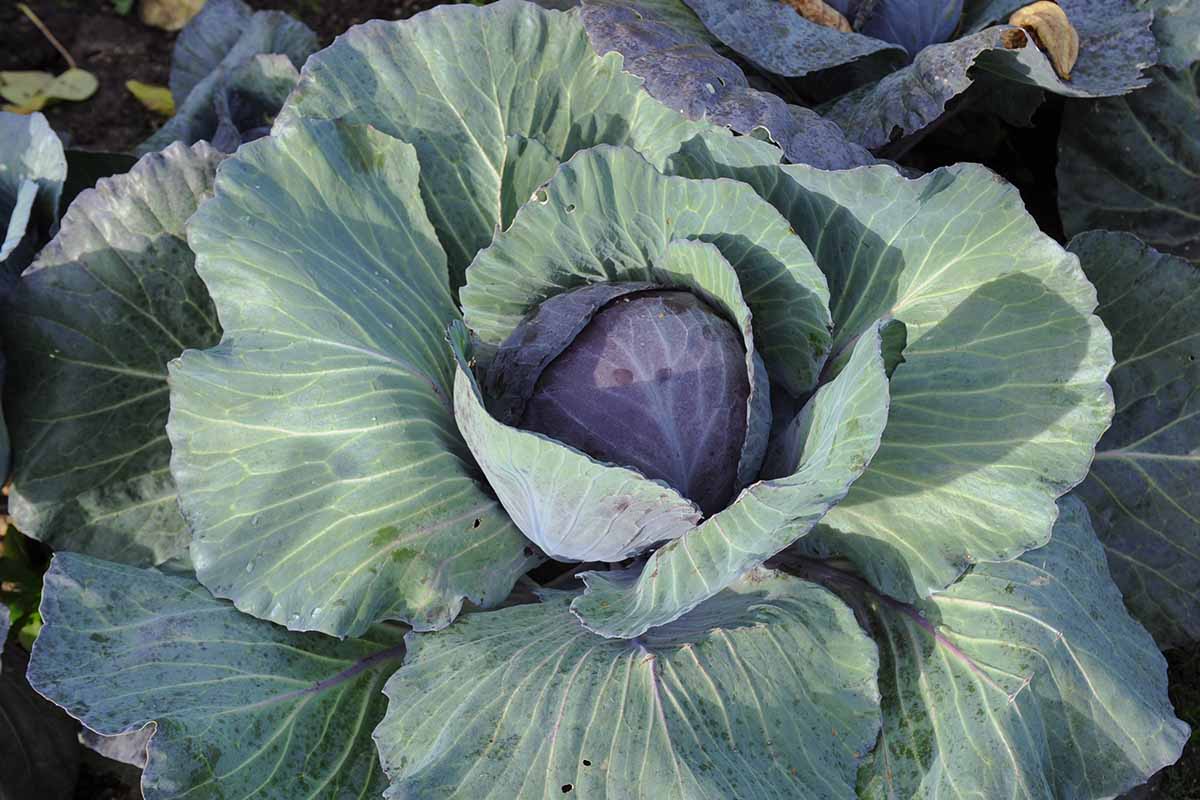

I particularly love growing fall cabbages because I am a huge fan of sauerkraut. Every year, I set aside much of my cabbage harvest to ferment a big batch of sauerkraut that will last me well into the winter months.
Start seeds in summer about 12 to 14 weeks before the first expected frost, and transplant into a sunny spot in the garden when seedlings are about four to six weeks old, leaving 12 to 18 inches of space between plants.
Consider using temporary shade covers after transplanting into hot summer soils to keep plants from overheating.
Eden Brothers has a wide selection of green and red cabbage seeds available for purchase.
Learn more about growing cabbage here, and see our guide to nine of the best varieties to grow at home.
8. Carrots
Carrots (Daucus carota var. sativus) make me think of hearty autumn stews and roasted root veggie medleys. If I plan ahead, I like to get a second round of carrots in the ground for a fall harvest.
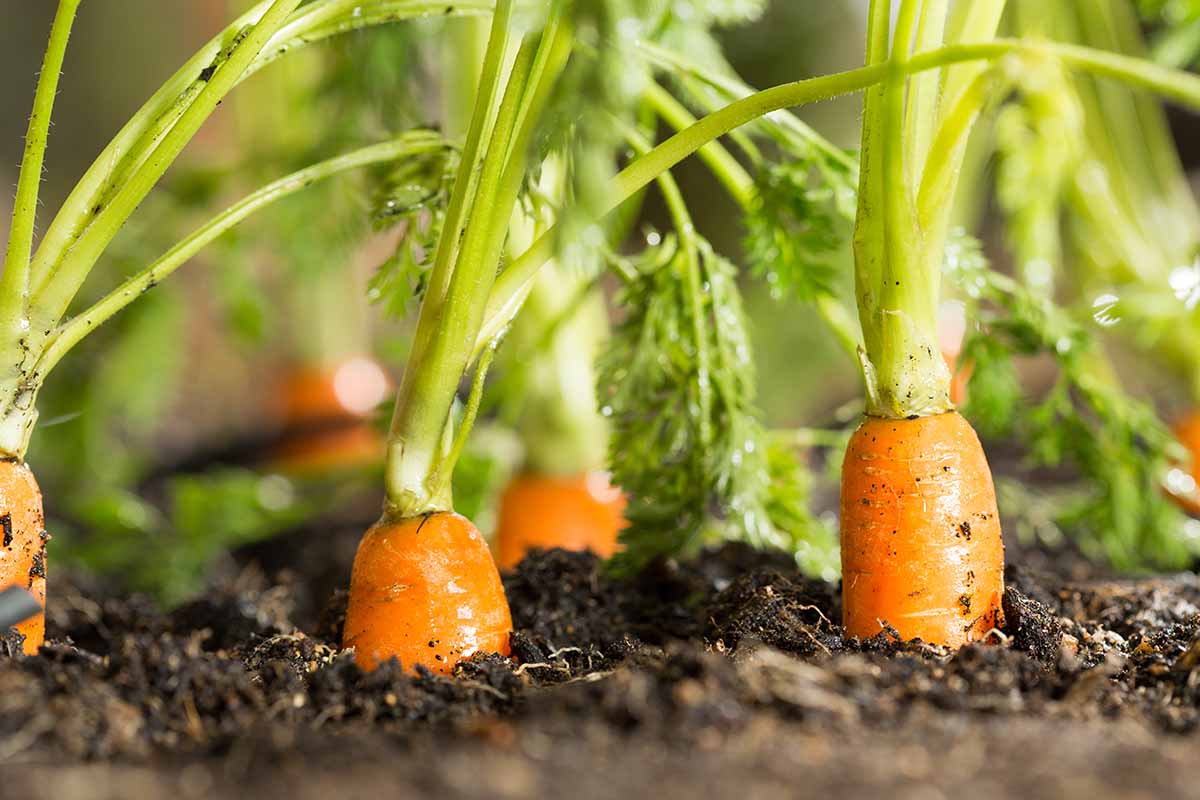

Plant carrots during the late summer heat. They will shoot up fast and grow sweet, thick, and tall throughout the fall. They can even survive a few light frosts, and roots are generally still edible even after the greens have died back.
Direct sow about eight to 12 weeks before the first expected frost, and thin to three inches apart when the tops are a few inches tall.
In warmer zones with mild winters, carrots can be overwintered under a thick eight-inch layer of mulch and continually harvested into the spring.
As the name indicates, the ‘Tendersweet’ cultivar from Eden Brothers is one of the sweetest varieties around and is quick to mature, making it a great choice for your autumn garden.
Read more about growing carrots here.
9. Cauliflower
Cauliflower (Brassica oleracea var. botrytis) is known for being a temperamental crop but if you pay proper attention to its growing requirements, it’s definitely doable for the average gardener.
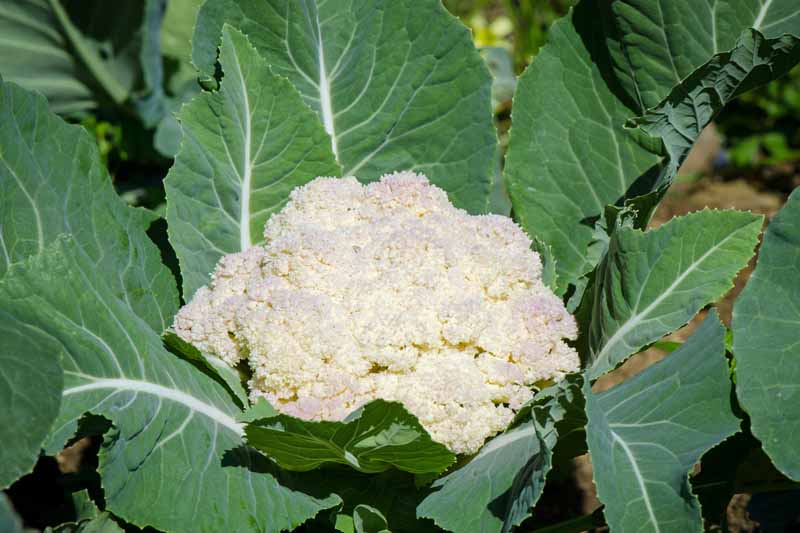

This cole crop can be grown throughout Zones 2 to 11 but timing varies by climate as it needs a lengthy period of cool temperatures to produce a good head.
Different cultivars range from 50 to 100 days to maturity, and besides the ubiquitous white heads, purple and orange varieties are also available and are often packed with more vitamins and nutrients than the traditional type found in grocery stores.
In northern zones, you can plant in the late summer for a fall crop or, if you are in a southern climate, you can start your plants in peat pots indoors in an air conditioned growing area where you are able to maintain a temperature of around 70°F.
Burpee is a good source of cauliflower seeds. You can also read more about growing cauliflower here.
10. Collard Greens
A close relative of kale, this Southern favorite can be planted in most of the continental US and in other regions with similar climates.
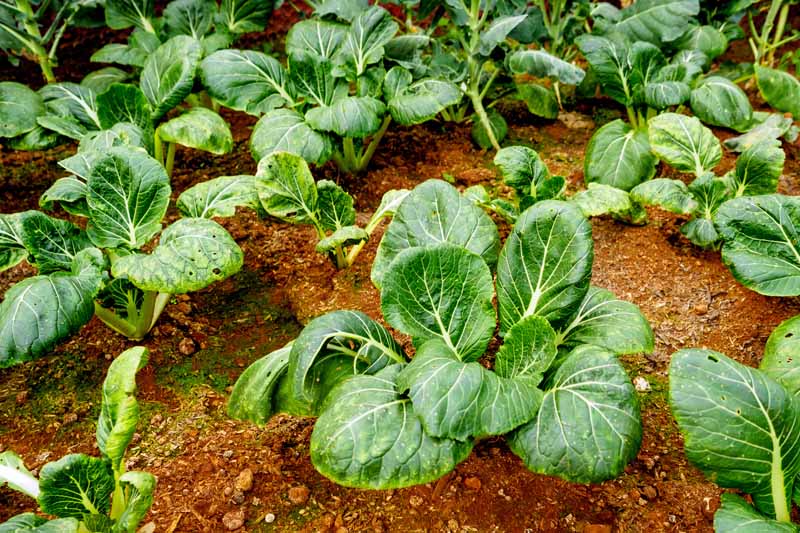

Collard greens (Brassica oleracea var. acephala) are similar to kale in their resistance to cold temperatures, rich nutrient content, and frost-triggered sweetness.
Collards are one of my all-time favorite vegetables, I love to cook up a quick stir fry with butter, lemon, and a dash of salt and serve it as a side with just about any meal. They are also a wonderful addition to hearty soups and stews.
Direct sow in full sun to partial shade about six to eight weeks before the first expected frost. Collards can be planted in just about any USDA Hardiness Zone, and can overwinter in Zones 6 and up.
Try ‘Vates’ collards, a cold-tolerant variety for your fall garden. Seeds are available at True Leaf Market.
Learn more about growing collard greens here, and see our roundup for more varieties to grow at home.
11. Kale
Kale (Brassica oleracea) is a classic fall garden crop.
Kale is exceptionally cold tolerant, maintaining its dark green color and providing rich nourishment long into the fall and winter months when most other crops have withered away.
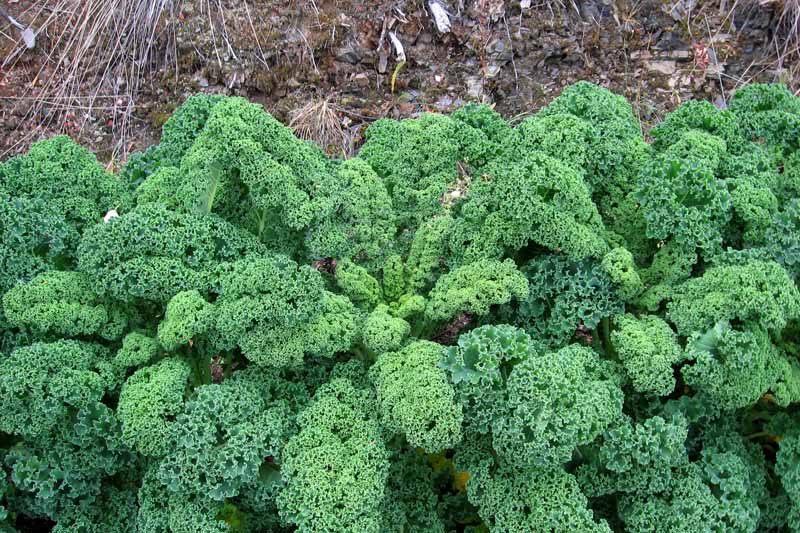

It can survive well into the winter with proper protection and it actually gets sweeter after a couple of frosts, as cold converts its starches into sugars in the stems and leaves.
For an autumn crop, direct sow in full sun to partial shade about six to eight weeks before the first expected frost.
Burpee has a good selection of seeds for different cultivars available.
Learn more about growing kale or check out some more recommended varieties here.
12. Kohlrabi
Distinctive, simple to grow, and quick to mature, kohlrabi (Brassica oleracea var. gongylodes) is another top choice for a fall garden.
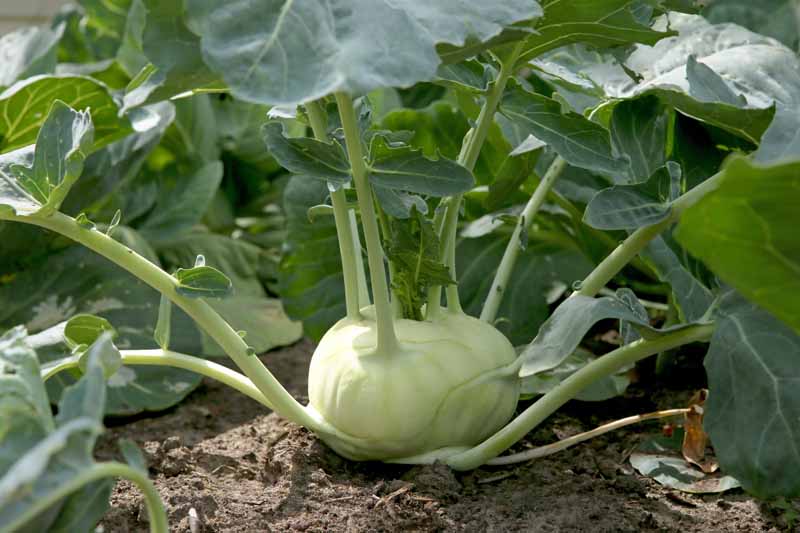

Members of the Brassicaceae family and close relatives of cabbage, they are crisp, sweet, and a bit tangy. Both bulbs and leaves can be eaten raw or cooked in a variety of ways.
I especially love to slice and eat the bulbs raw with hummus or veggie dip.
Plants are very frost tolerant, and like many fall crops, taste sweeter after a light frost or two. Direct sow six to eight weeks before your first expected frost.
Eden Brothers has seeds for a selection of varieties available for purchase.
You can find detailed growing instructions in our guide.
13. Mustard Greens
Spice up your fall garden with a patch of mustard greens (Brassica juncea)!
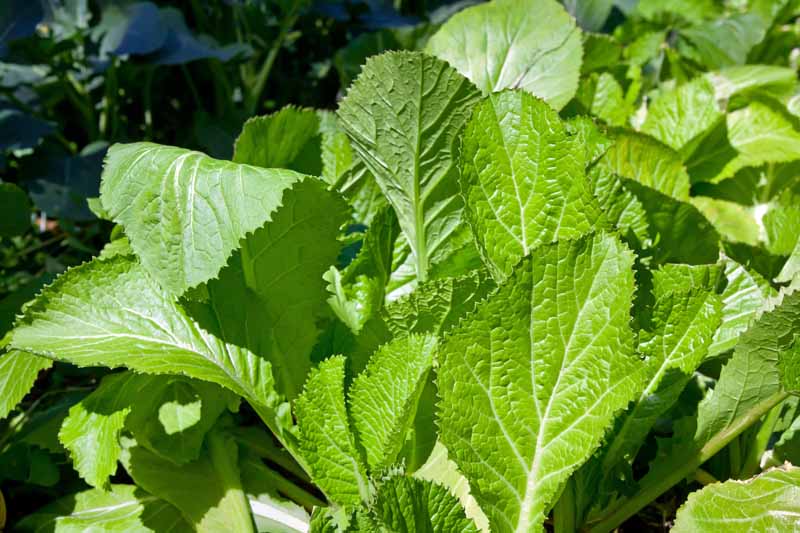

With similar nutritional value to its more famous relatives like kale and collards, and a bit of a spicy kick, this crop will keep the kitchen full of flavor all autumn long.
Direct sow in the garden starting in midsummer. You can continue to sow seed every few weeks for successive harvests. Thin seedlings to three inches apart.
You can find seeds for a variety of different cultivars available from Eden Brothers.
Learn more about growing mustard greens here.
14. Parsley
Parsley (Petroselinum crispum) happens to be one of my favorite culinary herbs. Lucky for me, it is also one of the hardiest, with the ability to survive to about 10°F.
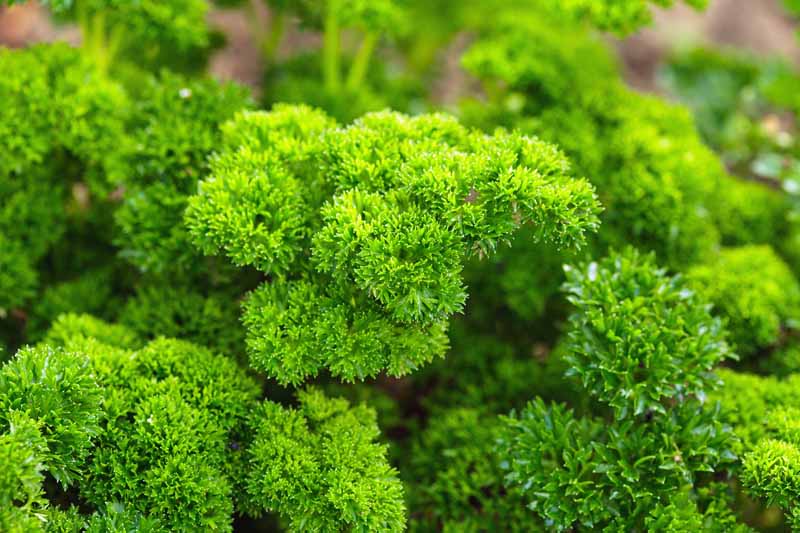

Though not the easiest to germinate and a bit slow to mature, if you plant parsley early enough it will be available for picking well into the fall season. Plan to plant parsley at least 10 weeks before the first expected frost.
Parsley is best started indoors. Soaking the seeds overnight before planting is often recommended to help speed up germination. Transplant into your garden once plants have a few true leaves.
Harvest continually throughout the fall and enjoy brightening your autumn soups and stews with a fresh green garnish of parsley leaves.
Seeds are available from True Leaf Market.
Find detailed growing instructions for this herb here.
15. Peas
Until recently, I never thought about peas (Pisum sativum) as a fall garden crop. However, this classic spring staple enjoys the cool temperatures of autumn as well, and peas grown in fall tend to taste sweeter than those grown in spring.
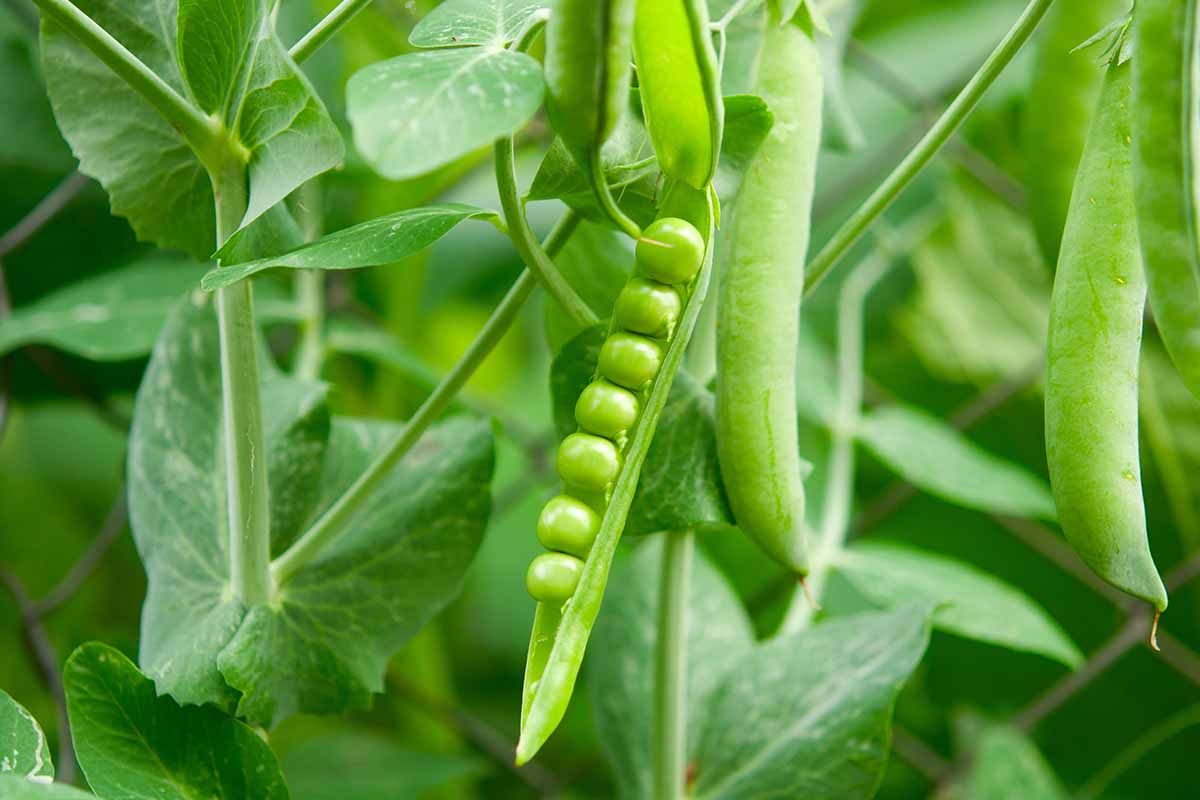

Peas will not survive a hard frost, so you should choose a variety with a shorter number of days to maturity, such as these ‘Thomas Laxton’ seeds from True Leaf Market.
‘Thomas Laxton’ matures in about 60 days, so seeds should be sown in your garden about 10 weeks before your average expected frost date.
In northern climates, this means you will likely be planting your seeds in midsummer, and since peas do not enjoy summer heat, you can help keep them cool and moist by watering well and applying a thick layer of mulch over the root zone. You can also use shade cloth to protect them from too much sun.
It may take a bit of forethought to grow peas in the fall, but trust me, when you can walk into the garden in September and taste the satisfying snap of a sweet homegrown pea, it will be well worth the effort!
Burpee has a wide assortment to choose from.
Learn more about growing peas here.
16. Rutabagas
As close relatives of turnips, rutabagas (Brassica napobrassica) have similar growth characteristics but with larger roots and a sweeter flavor.
I don’t know why they aren’t as popular as other root vegetables, but flavorwise, they are much better than most in my opinion.
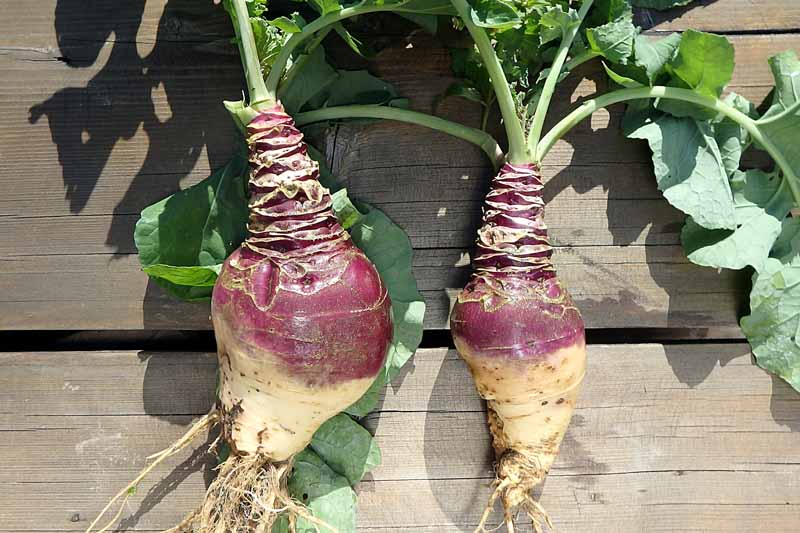

These brassica root crops are a cross between a turnip and a cabbage with golden flesh and purple and yellowy-white skin. They can be eaten raw, roasted, boiled, mashed, and even fried.
Planting time varies by Zone and should be timed for a harvest in the late fall or even in the winter for southern climates.
Roots take around 90 days to mature and are more tender and sweeter after the first or second frost. Leaves can be harvested earlier, just after the plant is established, and can be added to salads, steamed, or boiled.
Order seeds for ‘Purple Top’ from Burpee, and learn more about growing rutabagas here.
17. Spinach
Spinach (Spinacia oleracea) is another fall garden classic. It grows quickly in cooler weather, producing abundant leaves, and it can survive light frosts and freezes, making it an obvious addition to any autumn garden.


Direct sow in full sun eight weeks before the first expected frost date. You can begin harvesting the outer leaves as soon as they are several inches long and continue to harvest until plants start to flower.
I am a big fan of the large leaves and outstanding flavor of the ‘Noble Giant’ variety, seeds are available at Eden Brothers.
Read our spinach growing guide now.
19. Turnips
Turnips (Brassica rapa) are a multipurpose crop. Like beets and rutabaga, they can be grown for their delicious, mustard-like greens as well as for their hearty roots.
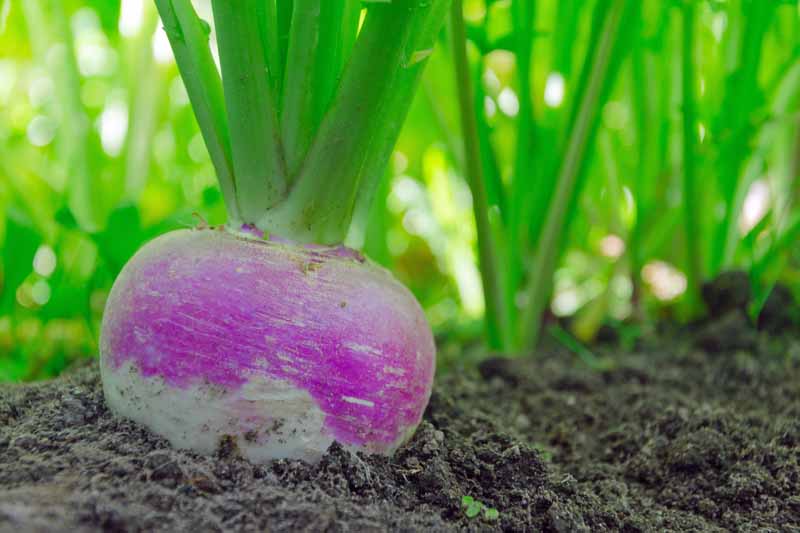

Turnips are lovers of cool weather and prefer temperatures around 60°F.
And turnips are quick growers with about 60 days between planting and maturity, which means you can often get multiple harvests in both fall and spring by succession planting.
With white, purple and white, or scarlet and white skins and white or yellow flesh, a plethora of cultivars are available to home gardeners, from radish-sized types to jumbo roots weighing several pounds each.
And with a good layer of mulch piled on top, these tasty cole crops can be left in the ground and harvested through the winter. Burpee has a nice selection of turnip seeds available.
Read more about growing your own turnips here.
19. Winter Radishes
While traditional radishes (Raphanus sativus) are a quick-growing crop that can be planted just four to six weeks before the first fall frost, winter varieties are slower growing, can grow to be several pounds in size, and will last in the garden well after first frost.
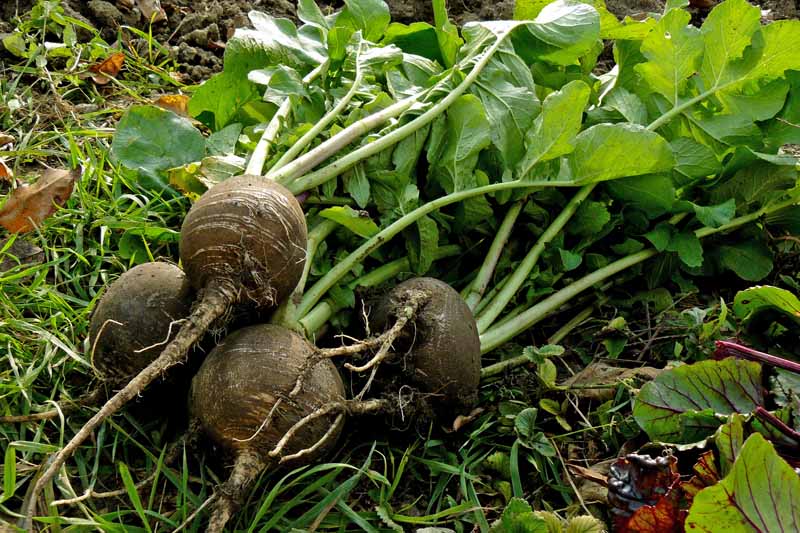

Plant winter radishes in early or midsummer and watch them increase in size and flavor as the weather starts to cool. Add a layer of mulch around the plants to keep them cool and prevent weeds.
Radishes are great additions to salads, stir fries, and ferments. I like to combine mine with cabbage for an added kick to my kraut!
‘Black Spanish Round,’ available from True Leaf Market, is a large spicy winter radish that keeps well in the ground after it matures.
Read our growing guide for more information.
Don’t Let the End of Summer Get You Down
Fall is the perfect season for gardens to shine, producing crops with exquisite flavor, large yields, and rich colors.
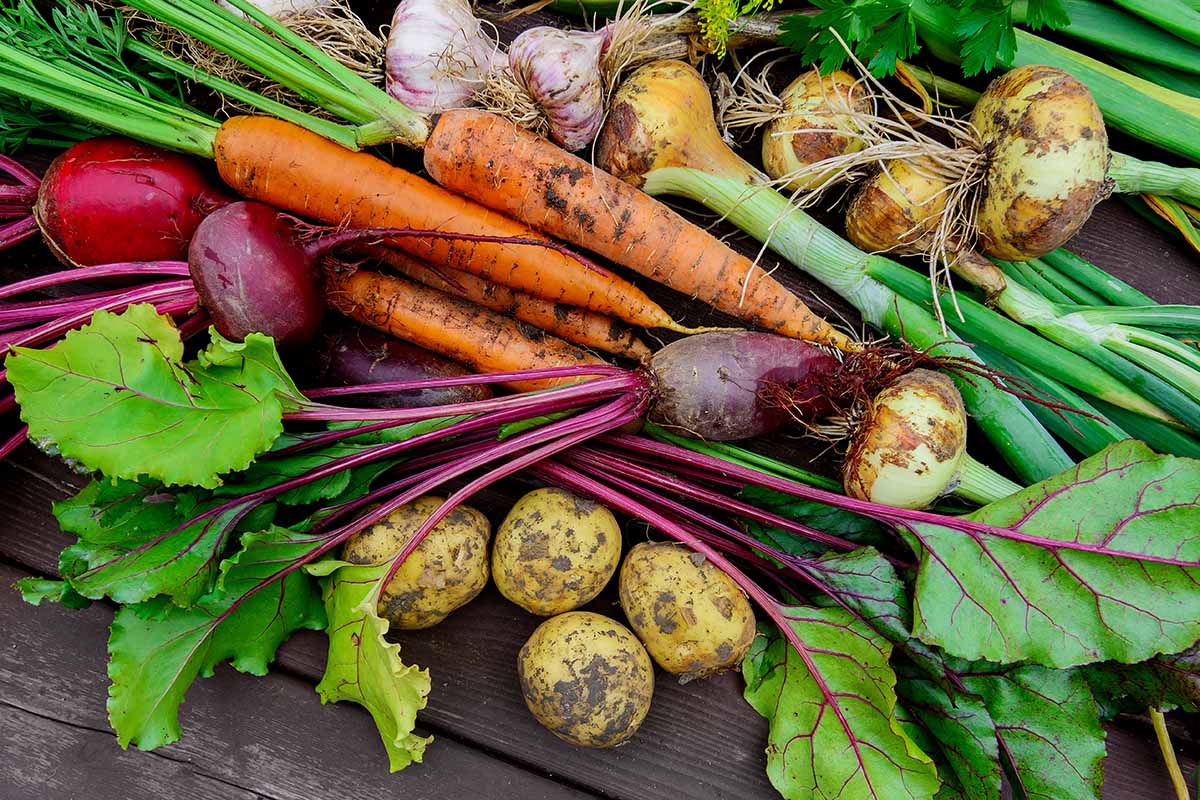

But don’t just take my word for it – keep your garden going through the autumn months with some of these cold-loving crops and see the benefits for yourself!
What types of edible plants do you like to grow in your autumn garden? Share your favorites in the comments below!
If you enjoyed this list, check out these other fall gardening articles next:
